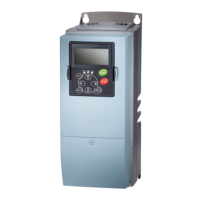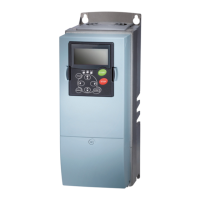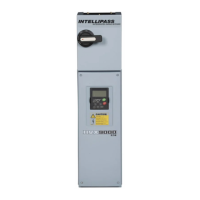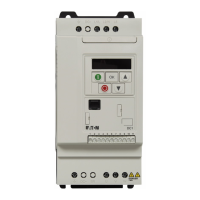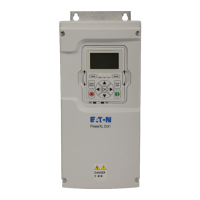Chapter 3: Technical data/ratings
4 SC9000 EP medium voltage drives IB020001EN—February 2016 www.eaton.com
Chapter 3: Technical data/ratings
Identification
WARNING
Exceeding the nameplate ratings of an SC9000 EP
medium voltage drive may cause equipment damage,
severe injury, or death. Do not apply an SC9000 EP beyond
its nameplate ratings.
A rating nameplate is located on the door nearest isolation
switch of each SC9000 EP AFD. The drive type and ratings
as required by industry standards are contained on this
nameplate. Also contained on this nameplate is the factory’s
general order number. This number should be given to the
Eaton sales office if a question should arise concerning the
equipment or if renewal parts are required.
The SC9000 EP is rated for use at a specific motor voltage
and current as well as for a particular duty cycle. Care must
be taken to ensure that these ratings are not exceeded.
Verify that motor full load amperes do not exceed the rating
indicated on the drive nameplate. The variable torque duty
cycle allows for 110% overload for 1 minute in each
10-minute period. The constant torque duty cycle allows for
150% overload for 1 minute in each 10-minute period.
Consult the factory if other duty cycle drives are required.
The higher rating will be specified on the drive’s rating
nameplate. Verify that the duty cycle indicated on the
nameplate matches the application.
The SC9000 EP may be rated for use with Constant Torque
or Variable Torque loads. Ensure that the load type as noted
on the drive-rating nameplate correctly matches the
application.
The standard SC9000 EP is designed for use with non-
regenerative loads. Consult the factory if the SC9000 EP
is to be used with regenerative loads.
If the motor will be operated at speeds below 50% of
base speed, a motor overload relay may not protect the
motor. An internal motor RTD may be required. Failure
to observe this precaution could result in damage to
the motor.
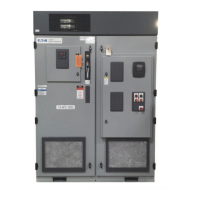
